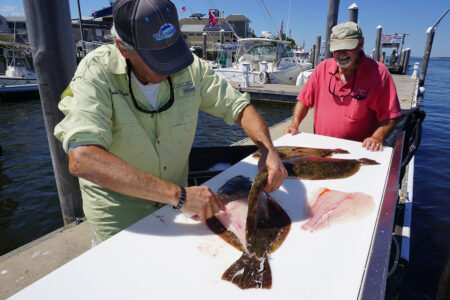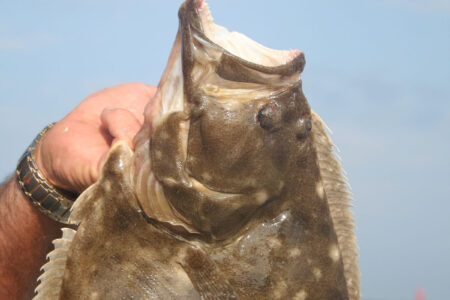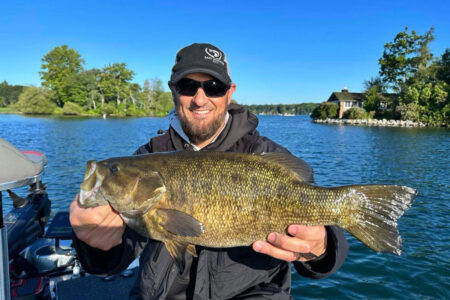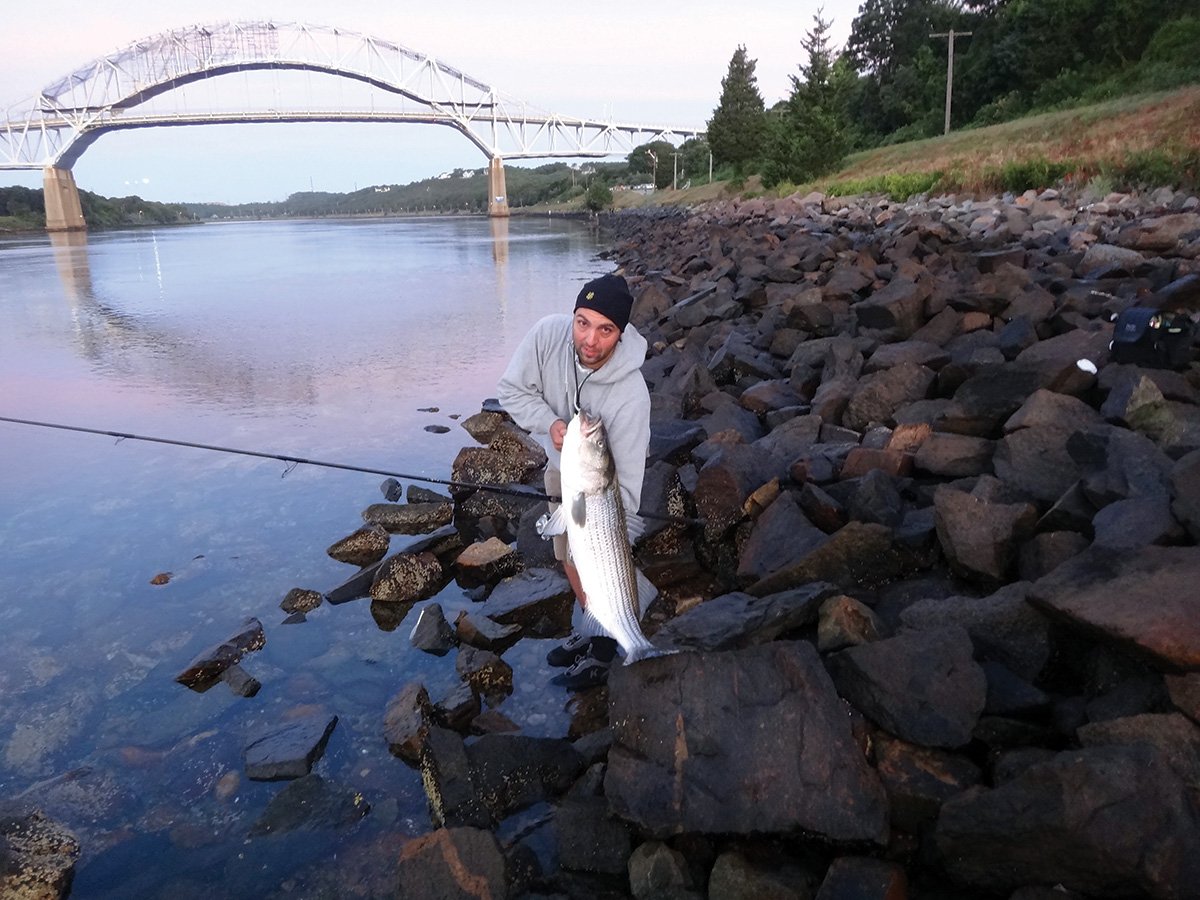
In the days following Superstorm Sandy, many people were trying to put their lives back together. Across most of New England, we were spared the brunt of the storm, and even with Sandy’s remnants still plainly visible on the radar reports began to trickle down from the Canal. I wouldn’t have been the least bit surprised had it been September instead of November, because I have utilized the shelter of the Canal for years during gales and tropical storms, but this time I was skeptical. I went anyway.
When I arrived on that first day of November, it was a beautiful sunny morning with high, wispy clouds and light winds. It’s amazing how quickly the natural world forgets disaster. It became apparent pretty quickly that shoals of sea herring had taken refuge in the Ditch, and big numbers of stripers from schoolies to well over 30 pounds were keeping most of the herring close to the banks and were falling victim to bone Red Fins, Magic Swimmers, Stick Shadds and pencil poppers. We thought it was amazing that all these fish had come into the Canal so late in the season. We had no idea what was about to transpire.
You may remember the second sucker punch that came after Sandy; a raging nor’easter that dropped nearly a foot of snow on parts of Long Island that had already been ravaged by Sandy. That same system began sucking northeast winds and sending overcast skies days before it actually arrived at the Canal. By November 5th bunker, snapper bluefish and whiting had joined the massive schools of sea herring, and the bite reached its peak. It was a blitzy day of wild weather; at one point I found myself chasing wolf packs of decent bass in the middle of an intense snow squall. The rocks were littered with bait, and everyone was walking around bewildered by what they had just witnessed.
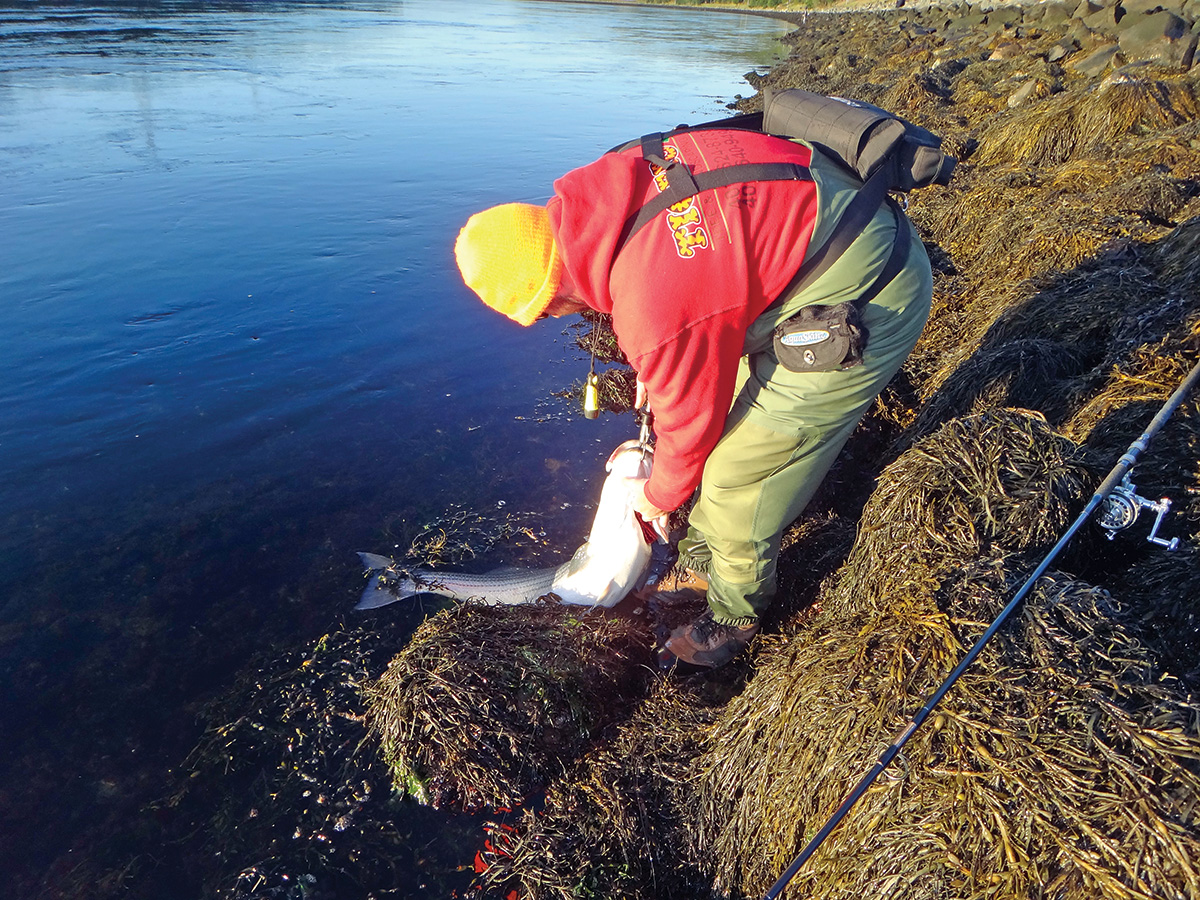
Storm Logic
Fall storms have given me increased action in the Canal many times over the years. I remember finding piles upon piles of squid in the Canal right before and after Irene back in late-August of 2011. This fueled several nights of lights-out eeling for many Canal regulars; sadly I was only lucky enough to get in on the eel bite for one night. Another time back in 2006, the lights below the Sagamore Bridge were solid with bait as a tropical storm passed just east of the Cape. The wind and rain kept everyone but myself and one other guy at home and we jigged up bass for hours from the mid-teens to low-30s. Just he and I.
It’s far from a unique phenomenon that baitfish seek shelter in an estuary when a storm approaches. Baitfish really only have two choices if they don’t want to get pummeled by huge waves—go inside or go offshore. The bass may also enter the Canal for safety, or maybe they just stay with the bait; we’ll never know for sure. But the simple fact remains that bait and bass have piled into the Big Ditch before a major storm enough times in my years fishing there that I always feel like I should be there when I see a big storm climbing the coast.
| No Canal? No Problem! |
|---|
Look In The Back…Another thing worth mentioning is that this logic also works in major rivers and bays when big weather barrels up the coast. Bait will seek refuge wherever it can, and stripers often go on a feeding binge before a storm hits. A large school of bunker or other larger baits can draw big bass deep inside rivers and bays, and while the oceanfront is high and dirty you just might find yourself picking away at 30-plus-pounders in the solitude of a quiet backwater. I’ve seen it happen, and live bait is almost always your best bet. |
Not Always a Perfect Storm
More often than not, these storms come during a tide other than those that most of the Canal crowds salivate over. This means whatever daytime opportunities happen to arise are not likely to occur at daybreak. Storms also bring bigger tides and, therefore, stronger currents with them, which make fishing more difficult if you don’t time it right. Fast water keeps the bulk of the fish hunkered down on the bottom while they wait for slower current. Targeting the slowest stages of the tide not only makes it easier to fish, but it is also the time when the bass are most likely to feed. Slower water means that it’s just easier for the bass to negotiate the current and overcome prey.
Jigging is probably your best bet. You can fish the last two or even three hours of the west tide effectively and the fishing will just get easier as the water continues to slow down. With storm currents it may be necessary to use jigs as heavy as 6 ounces at mid tide, but by the time the current is nearing slack, you’ll be using 3 ounces. I will openly admit that I am not a big jigger; I will do it when I think I have to, but I much prefer other methods. The one thing I will tell you is that the hit on a jig can become very addictive. If you don’t know how to jig the Canal, the basics are that your jig should be heavy enough to get down within a few seconds of splashdown. I generally throw mine to about 2 o’clock and expect it to touch bottom when it’s roughly straight out from my position. From there I use hard lifts of the rod and controlled drifts to swim my jig along close to the bottom while making regular contact with it. As the jig swings up and away from the bottom you can release more line from reel to get a few more bounces, or just crank it in and fire again. The best advice I can offer is to vary your casting distance; sometimes the fish are way out, but sometimes they are right along the edge of the drop. If you don’t probe all of the water in front of you, you will never know.
When It Goes Off
In the 24 to 48 hours after a storm passes much of the coastline will be unfishable, battered by waves, full of silt, weed and debris. The Canal, while it may be weedy, is usually fishable. This is when it’s wise to go by the old saying we all know, “the best time to go fishing is when you can.” The Canal is famous for going off when we least expect it; afternoon blitzes have become more and more common and we’re not talking about schoolies here. With a major concentration of bait in the Canal, and all kind of barometric gymnastics taking place, crazy things can happen.
The best approach is to stay mobile. Get on your bike and move from rip to rip while looking for bait or blowups. My three weapons of choice for daytime fishing are the Guppy 3-1/2 ounce pencil popper, the 9-inch, slow sink Magic Swimmer and a Super Strike 2-3/8 ounce popper. If you’re lucky, you’ll hit one of those magic days when the place just explodes. If you hit one of those days and people are piling up around the blitz, stick with the Magic Swimmer; the fish crush it and it’s a shorter cast, which makes landing fish a million times easier in a crowd. Even if the day bite is just a pick. I think riding around looking for fish is a lot of fun, and given the fact that I have been nighttime surf guy my whole life, it feels like I’m stealing from the cookie jar when I stick a 35-pounder at 2 in the afternoon.
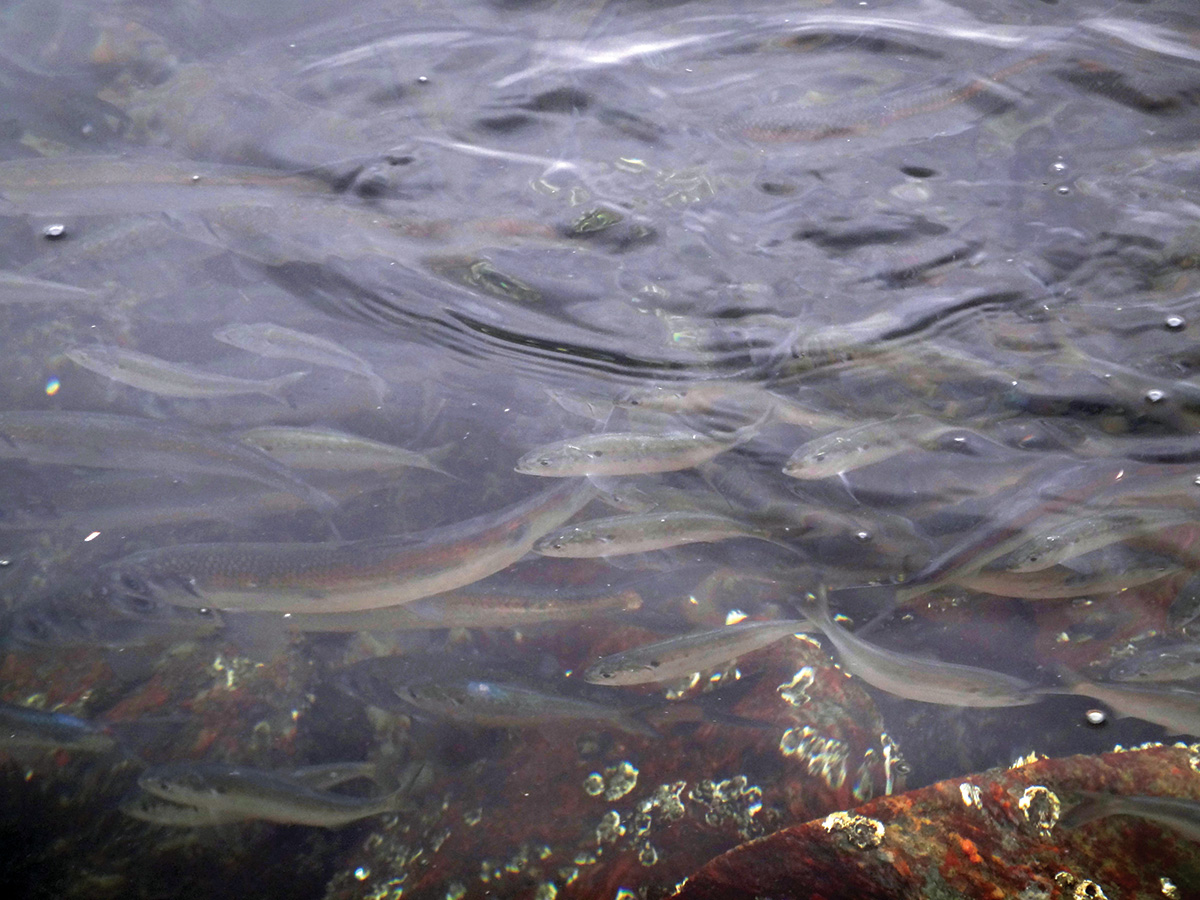
Fight Night
The night crowd at the Canal is a very different lot, unless you fish the Bus Stop; in that case it’s really very much the same as an internet-blown day bite. But elsewhere in the Ditch there are ghostly shadows that ride from eddy to eddy drifting eels. There are also staple characters, like the Canal Cowboy—a guy that rides the Ditch wearing a cowboy hat at all hours of the night listening to country music on a small radio. You’re not likely to see the Bus Stop crowd or the cowboy on a storm night, but the eelers will be there. With the likelihood that the pressure change and subsequent heave will push fish inside, it’s only logical that a big eel swimming through the current would be hard for even the wiliest cow to pass up. Big rods, big eels and conventional reels are standard equipment, and this game is not for wimps. But the rewards of battling a giant on a locked drag and a single hook can be worth the wind-driven rain and the dirty looks from the wife.
There was a time when the swimmer bite in the Canal was phenomenal, especially during the fall migration, but it’s just not like that anymore. We used to enjoy some all-out blitz nights on Bombers and Red Fins and have vast stretches of shoreline to ourselves. Even though it’s been at least 10 years since I’ve seen a reliable swimmer bite fire up after dark in the Canal, if there was ever a time that it seemed likely, it would be after a storm piled the place with bait.
Storm strategies for the surfcaster all have to do with finding clean water. Many casters will pile up at the mouths of major inlets, because they move enough water to keep it clean and they provide a direct connection to deeper water, a highway for the bass to travel freely to and from the placid backwaters. The Canal is just one huge highway that draws bait and bass in all situations. But if my experiences over the past 19 years fishing there hold any water at all, a major storm can really bring the heat.
| Turn Back The Clock |
|---|
Sandy ReportsRed Top Sporting Goods – from NEF 11/08/2012 |
